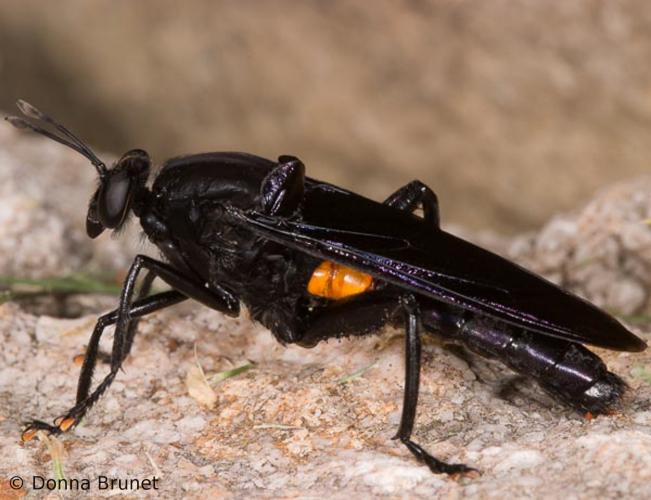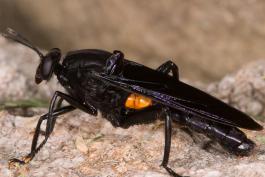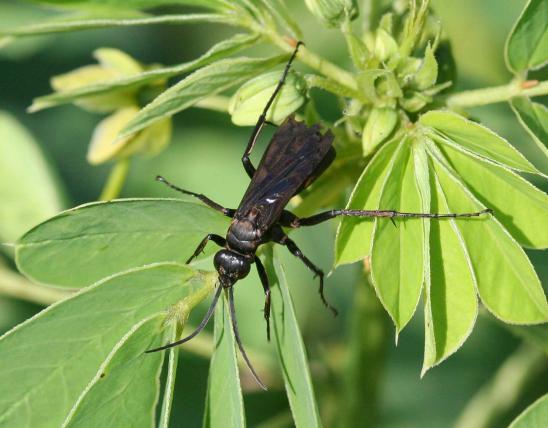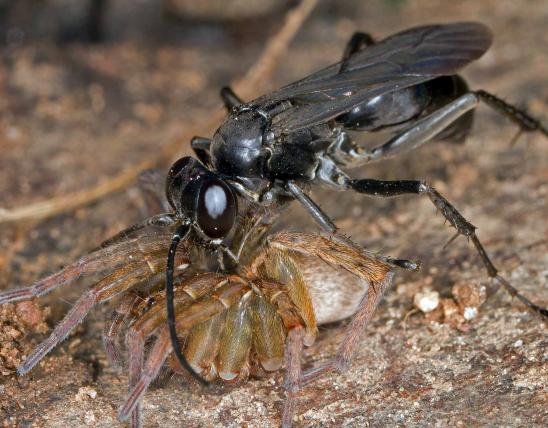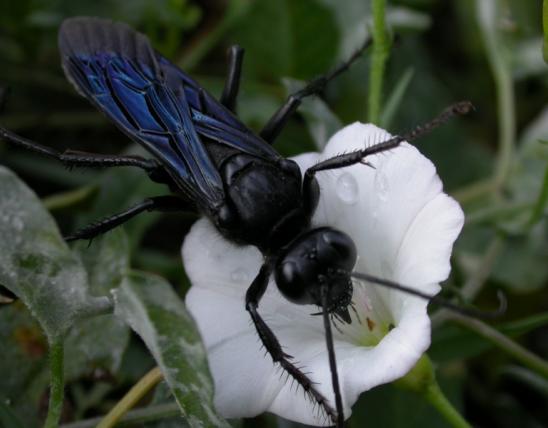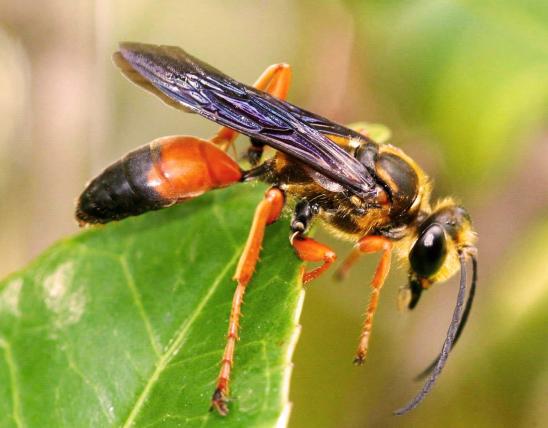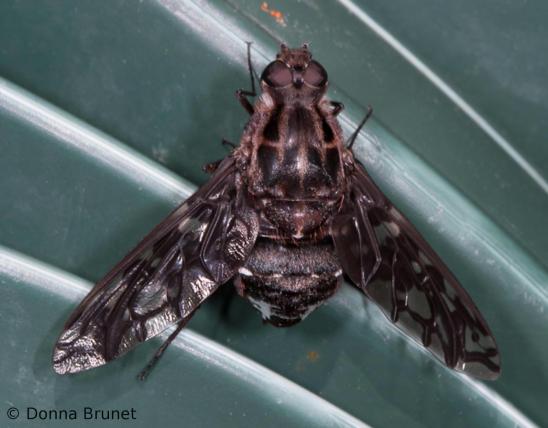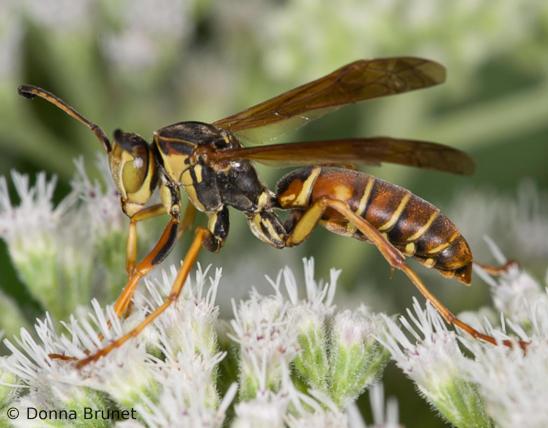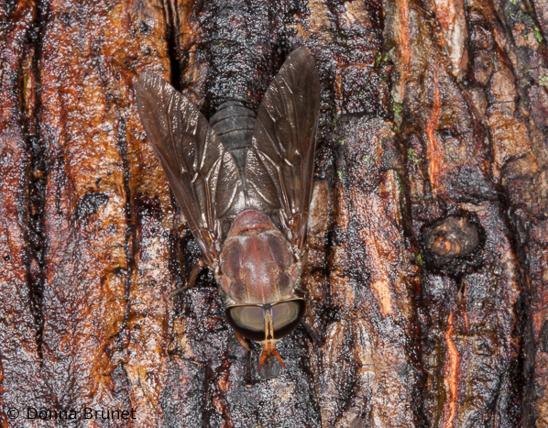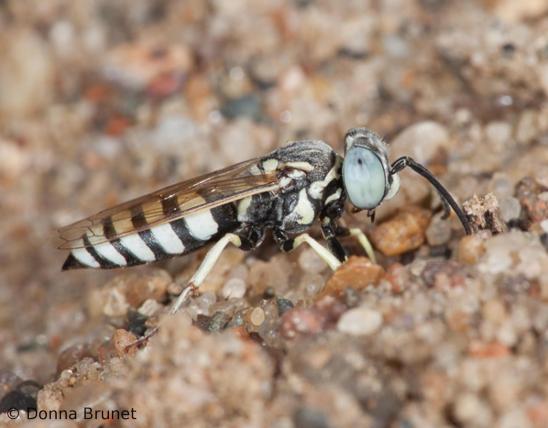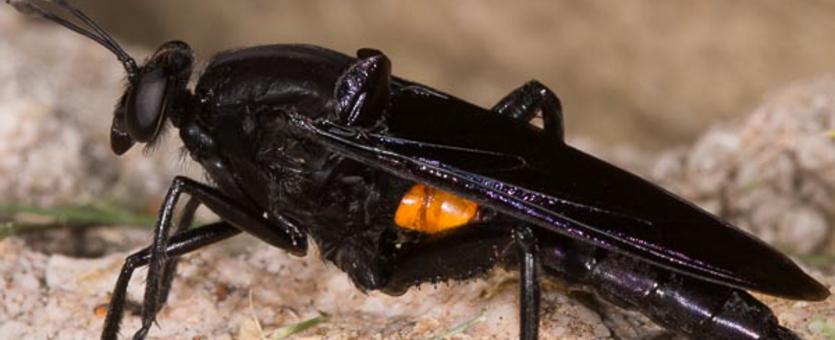
Members of the Mydas fly family tend to be large (for true flies), and many species resemble wasps (although they are harmless). Many species are black, dark, or tan, with red, orange, or yellow bands. Like all true flies, they only have only one pair of wings. Unlike most flies, they have clubbed antennae (rather like the antennae of butterflies). Each foot has two pads, and there are distinct aspects to the wing venation as well.
Similar species: Robber flies (family Asilidae), a closely allied group, look similar (for they too are large bee and wasp mimics), but they lack the clubbed antennae, and there are differences in wing venation, as well. There are many different insects that mimic bees and wasps, and there are many different bees and wasps for them to mimic! Keep in mind that members of the fly family have only two wings (one pair), while other insects (including the bee and wasp family) have four wings (two pairs).
Length: ¼ to 1¼ inches. Most are about 1 inch long. (Some tropical species, including the world's largest fly, are more than 2 inches long.)
Statewide.
Habitat and Conservation
Globally, most species of Mydas flies live in tropical, subtropical, and dry regions, and in North America, the greatest diversity is found in dry areas (such as the desert southwest). The well-known species Mydas clavatus and other species that commonly occur in eastern North America live in grasslands, woodlands, forests, and other various habitats. The larvae of most species live in rotting wood (such as dead trees lying on the forest floor) or in the soil.
Food
As larvae, Mydas flies prey on the grubs of beetles, which are common in the soil and rotting wood habitat that Mydas fly larvae live in. Because the larvae of some Mydas flies eat the root-eating beetle grubs that damage lawns, Mydas flies have been proposed as a biocontrol agent for sod farms. During the short time they spend as adults, Mydas flies apparently sustain themselves with nectar and pollen from flowers, presumably assisting in pollination. In prairies, Mydas flies often are seen visiting the flowers of rattlesnake master.
Status
These harmless flies are in a relatively small family, and they are less commonly seen than other types of flies. Because of their size and imposing look, they make a big impression when people do see them. Harmless species that gain protection from predators by resembling stinging, biting, toxic, or distasteful species are called Batesian mimics, named after Henry Walter Bates, the 19th-century evolutionary biologist who studied this form of mimicry.
Life Cycle
Like other flies, Mydas flies begin life as an egg, which hatches into a grublike larva. Most of the life is spent in the larval stage, whose central goals are to eat and grow, molting a number of times. It is likely that most Mydas flies spend at least a year as a larva. The next stage is a pupa, during which the insect transforms into its final stage, emerging from the pupa as a winged adult, whose central goal is to mate and reproduce. In many species, males stake out positions at favorable egg-laying sites and wait for females to arrive. Mydas flies are a little-studied group. If you are considering a career in biology, this family awaits thorough investigation.
Human Connections
The name for this fly family, Mydidae/Mydas, apparently alludes to the Phrygian King Midas of Greek mythology, who gained the magical ability to have everything he touch turn to gold (it backfired, of course, since you can’t eat gold). The connection with the fly seems to be the golden (or reddish) mark on the second abdominal segment on the species Mydas clavatus. Incidentally, the father of King Midas, Gordias, was the legendary maker of the Gordian Knot; that story is the inspiration for horsehair worms being called Gordian worms. In the past, naturalists had an excellent grasp of Classical thought!
Ecosystem Connections
The celebrated behavioral ecologist John Alcock, in Sonoran Desert Summer, explains that many harmless wasp mimics, including some species of Mydas flies, emerge as adults later in the season than the stinging species they mimic. This gives potential predator species (fledgling flycatcher birds, for example) time to be stung (and educated!) by the stinging species well before the harmless species appears on the scene. Thus the mimicry achieves full effect.
